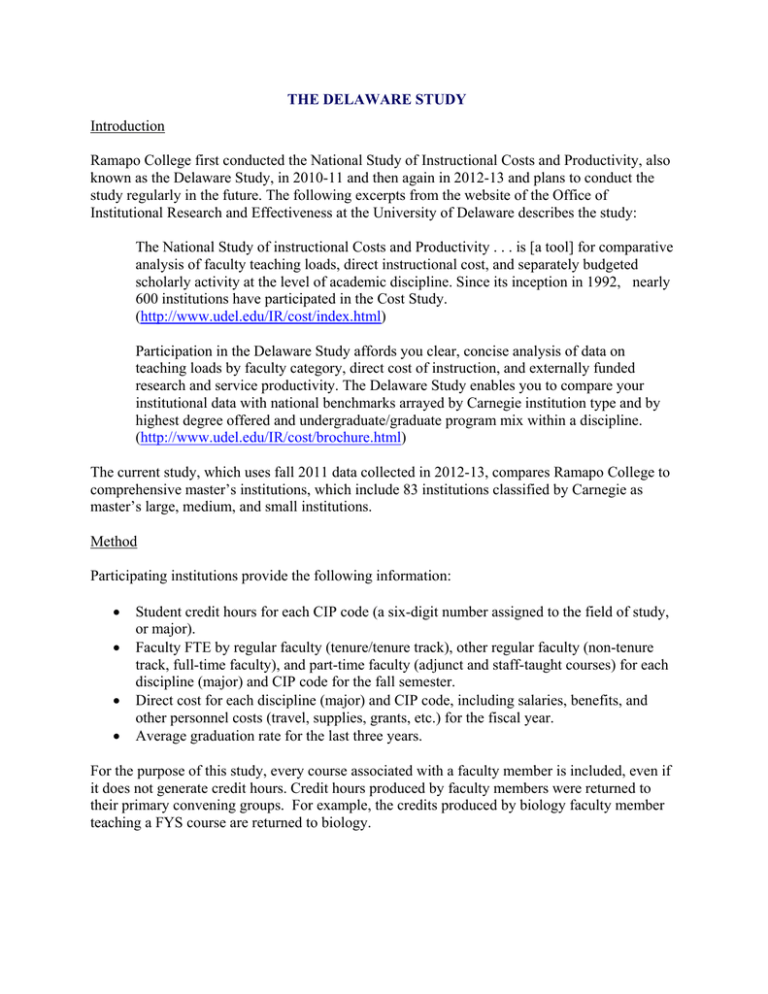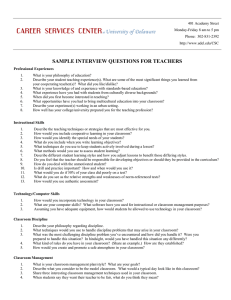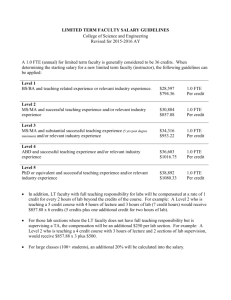THE DELAWARE STUDY Introduction
advertisement

THE DELAWARE STUDY Introduction Ramapo College first conducted the National Study of Instructional Costs and Productivity, also known as the Delaware Study, in 2010-11 and then again in 2012-13 and plans to conduct the study regularly in the future. The following excerpts from the website of the Office of Institutional Research and Effectiveness at the University of Delaware describes the study: The National Study of instructional Costs and Productivity . . . is [a tool] for comparative analysis of faculty teaching loads, direct instructional cost, and separately budgeted scholarly activity at the level of academic discipline. Since its inception in 1992, nearly 600 institutions have participated in the Cost Study. (http://www.udel.edu/IR/cost/index.html) Participation in the Delaware Study affords you clear, concise analysis of data on teaching loads by faculty category, direct cost of instruction, and externally funded research and service productivity. The Delaware Study enables you to compare your institutional data with national benchmarks arrayed by Carnegie institution type and by highest degree offered and undergraduate/graduate program mix within a discipline. (http://www.udel.edu/IR/cost/brochure.html) The current study, which uses fall 2011 data collected in 2012-13, compares Ramapo College to comprehensive master’s institutions, which include 83 institutions classified by Carnegie as master’s large, medium, and small institutions. Method Participating institutions provide the following information: Student credit hours for each CIP code (a six-digit number assigned to the field of study, or major). Faculty FTE by regular faculty (tenure/tenure track), other regular faculty (non-tenure track, full-time faculty), and part-time faculty (adjunct and staff-taught courses) for each discipline (major) and CIP code for the fall semester. Direct cost for each discipline (major) and CIP code, including salaries, benefits, and other personnel costs (travel, supplies, grants, etc.) for the fiscal year. Average graduation rate for the last three years. For the purpose of this study, every course associated with a faculty member is included, even if it does not generate credit hours. Credit hours produced by faculty members were returned to their primary convening groups. For example, the credits produced by biology faculty member teaching a FYS course are returned to biology. Calculation of three major indicators: 1. Student credit hours = number of students * number of credits for the course (typically 4) in each course per discipline. Example: 2. Faculty FTE = (number of courses in a discipline * number of credits for a course) / 12. Assumption: full-time load = 12 credits. Example: 3. 20 students each in 5 courses for 4-credit courses yields 20*5*4 = 400 student credit hours. 28 course sections in discipline X for 4-credit courses yields (28*4)/12 = 9.3 FTE. Average student credit hours per FTE = total student credit hours for that discipline / total FTE for that discipline. Example: 400 student credit hours / 9.3 FTE = 43 credit hours per FTE.





